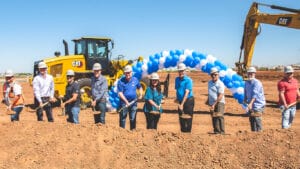An educated and skilled workforce is one of the top factors in determining business attraction and expansion decisions. We hear this all the time from national site selection consultants to existing businesses within our communities.
Creating jobs is no longer the primary focus for our regions and communities. Instead, we must switch gears and focus on a much more complicated task of educating and creating a workforce if we hope to compete in the near-future economies.
As the demographics of the workforce shift, with Baby Boomers leaving and Millennials entering, the concern is no longer having enough individuals to fill the positions, but having those individuals educated to the level required by the businesses seeking them.
Expanding economies require a continuous supply of skilled workers. This supply can be accomplished either through recruitment at the expense of other communities or through local programs.
A simple step that we can take in Arizona is to support the dual enrollment strategies for high schools and the removal of the 25-percent cap on freshmen and sophomores to participate in these programs. Dual enrollment initiatives promote college and career readiness for students and helps Joint Technical Education Districts (JTEDs) achieve the requirement that its programs lead to industry certification or licensure.
Current legislation allows for juniors and seniors to participate with only 25-percent of the freshman and sophomores allowed to enter into the programs. Elimination of this cap would allow tremendous fiscal gains given that early college models in Career and Technical Education (CTE), eliminate duplicative programs, and increase high school retention, completion and matriculation to college or technical training. Starting these programs at the junior level simply does not go far enough to achieving the desired outcomes for career ready students.
We have pockets of successes in various segments of our state as it pertains to marrying business requirements to education curriculums. Many community colleges will partner with a specific industry to provide a curriculum to educate and train an identified need of workers in that sector.
These individual successes are not enough. We need a comprehensive strategy that begins the process of properly educating our future workforce much sooner than high school. Removing the freshman/sophomore cap is a start but does not go far enough.
The earlier we can teach our students skills that directly connect with real-world industries, the better. Ideally, the process should begin when the student enters the educational system: in kindergarten.
This legislative update was written by Curt Woody, AZED Pro, president of the Arizona Association for Economic Development (AAED) and director of economic development & tourism for the Town of Marana.




